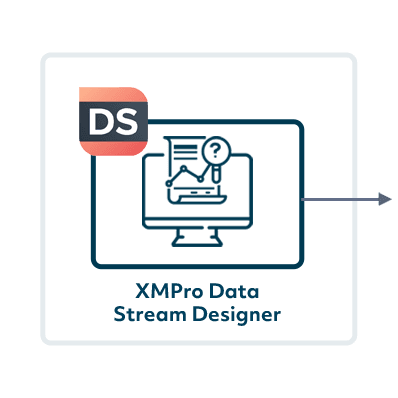Monitor Storm Water Reservoirs For Flood Prevention
Introduction
Metropolitan cities often face flooding challenges during prolonged rain spells, exacerbated by inefficient management of stormwater reservoirs. These challenges include inadequate reservoir management, as reservoirs frequently near full capacity at the onset of rain due to fixed-route maintenance schedules; lack of predictive management, with services teams lacking dynamic scheduling based on reservoir levels and weather forecasts; and water quality concerns, with the potential for industrial runoff into stormwater systems posing environmental and safety risks.

The Challenge
Water utilities face several challenges in flood management:
- Accurate Flood Prediction: Utilizing diverse data sources to accurately predict flood events and their potential impact.
- Effective Response Planning: Coordinating response efforts to mitigate flood impacts on water infrastructure and service delivery.
- Public Safety and Communication: Ensuring public safety and maintaining clear communication with stakeholders during flood events.
The Solution: XMPro iBOS for Reservoir Water Level Flood Prevention
XMPro’s solution effectively manages flood risks through advanced data integration, predictive analytics, and emergency response planning. It integrates meteorological, hydrological, and geographical data using the Data Stream Designer to monitor flood risk factors. Machine learning algorithms predict flood events, aiding proactive response planning and resource allocation. The system provides real-time monitoring of weather conditions and water levels, with alerts for utility operators and emergency responders. It also coordinates emergency response efforts, including mobilizing crews, activating flood barriers, and managing water resources. Public safety is enhanced with automated alerts and updates, while configurable dashboards and reporting features support comprehensive post-event analysis and regulatory compliance.
Key Features
Data Integration and Analysis:Integrating meteorological, hydrological, and geographical data to monitor flood risk factors. XMPro’s Data Stream Designer aggregates this data, providing a comprehensive view of potential flood scenarios.
Predictive Flood Modeling:Utilizing machine learning algorithms to analyze data and predict flood events, including timing, location, and severity. Predictive insights assist in proactive flood response planning and resource allocation.
Real-Time Monitoring and Alerting:Providing real-time monitoring of weather conditions and water levels, with an alert system that notifies utility operators and emergency responders of impending flood risks.
Emergency Response Coordination:Facilitating coordinated response efforts, including mobilizing emergency crews, activating flood barriers, and managing water storage and diversion.
Public Safety and Communication Tools:Offering tools for timely public communication, including automated alerts and updates to residents and businesses in affected areas.
Configurable Dashboards and Reporting:Customizable dashboards display key flood risk data and response plans, alongside comprehensive reporting features for post-event analysis and regulatory compliance.
Discover This Solution In Our Product Tour
How XMPro iBOS Modules Work Together To Create This Flood Prediction Solution

XMPro Data Stream Designer
XMPRO’s Data Stream Designer lets you visually design the data flow and orchestration for your real-time applications. Our drag & drop connectors make it easy to bring in real-time data from a variety of sources, add contextual data from systems like EAM, apply native and third-party analytics and initiate actions based on events in your data.
Figure 1: Flood Prediction Data Stream
This flood prediction data stream ingests weather station data to predict potential flooding events. The data is processed through a model path and combined with other relevant data sources. The flood prediction model is then run, and the results are formatted and broadcasted. The data stream generates city flood predictions in both single and chart formats and runs recommendations to provide actionable insights for flood mitigation and response.
Figure 2: Water Reservoir Level Predictive Management Data Stream
This water reservoir level predictive management data stream ingests current weather station data and historical reservoir water level data. It processes and joins real-time water level data with historical data to create a comprehensive dataset, which is then fed into an ML Flow water level predictive model to forecast future water levels. The data stream continuously monitors if the current water level exceeds predefined thresholds indicating immediate risk and automatically triggers water release procedures through the action agent to lower the water level in critical response situations. The predictive model output is visualized for operational insights, and actionable recommendations are generated based on the predictive data and current conditions, leveraging XMPro’s embedded AI agents and machine learning capabilities to ensure timely and efficient water reservoir management.
Figure 3: Pump Predictive Maintenance Data Stream
This pump predictive maintenance data stream ingests pressure, flow, temperature, vibration, and sensor health data from multiple sources before it is normalized and combined with contextual data from SAP and Azure Digital Twin. The integrated data is then used to calculate performance metrics, run predictive models, and update Azure Digital Twin and ADX, enabling the identification of pumps likely to fail and the estimation of their remaining useful life.
Figure 4: Water Pump Unity Model Data Stream
This water pump unity model data stream ingests pump data to monitor and analyze pump conditions. The data is processed and combined with existing recommendations. It is then standardized, broadcasted, and evaluated through the unity pump model. The stream aggregates data by pump assets and stations, incorporates geographical context, and visualizes the data in single and chart formats. Finally, it runs recommendation logic to provide actionable insights for optimal pump performance and maintenance.

Recommendation Manager
XMPRO Recommendations are advanced event alerts that combine alerts, actions, and monitoring. You can create recommendations based on business rules and AI logic to recommend the best next actions to take when a certain event happens. You can also monitor the actions against the outcomes they create to continuously improve your decision-making.
Figure 1: Reservoir 1 Level Nearing Capacity Recommendation
This recommendation identifies that Reservoir 1 is nearing its maximum storage capacity. It provides critical event data, including the facility name (Reservoir 1), ID (24), type (reservoir), facility code (RES01), and current flow rates in and out (both at 0). Users can add notes, mark the recommendation as resolved or a false positive, and create an event response with special instructions if necessary. This proactive alert helps manage water levels efficiently, preventing overflow and ensuring optimal reservoir operation.
Figure 2: Flood Risk Detected – High Recommendation This example flood risk recommendation identifies a high likelihood of flooding within the next 48 hours for the specified location. It provides event data, including the location (Singapore), date, weather description, current temperature, maximum temperature, and minimum temperature. Users can add notes, mark the recommendation as resolved or a false positive, and create an event response with special instructions if necessary.
XMPro App Designer
The XMPro App Designer is a no code event intelligence application development platform. It enables Subject Matter Experts (SMEs) to create and deploy real-time intelligent digital twins without programming. This means that SMEs can build apps in days or weeks without further overloading IT, enabling your organization to accelerate and scale your digital transformation.
The Solution
XMPro’s solution leverages continuous monitoring of stormwater reservoirs, integrating level data with weather predictions to optimize service crew deployment and monitor water quality for safety.
Key Dashboard Features:
Key Features:
- Continuous Reservoir Monitoring: Real-time monitoring of stormwater reservoir levels to anticipate flooding risks.
- Weather Prediction Integration: Combining reservoir level data with weather forecasts for dynamic scheduling of maintenance activities.
- Water Quality Monitoring: Assessing water quality to detect industrial runoff and other contaminants.
- Dynamic Truck Rolls: Implementing flexible service crew dispatch based on reservoir levels and weather predictions.
- Automated Alerts and Recommendations: Generating alerts for potential flooding and hazardous conditions, guiding service crew actions.
Benefits:
- Reduced Flooding Incidents: Proactive reservoir management to minimize residential flooding.
- Enhanced Safety: Timely warnings to service crews about hazardous conditions.
- Improved Environmental Protection: Monitoring for industrial runoff to safeguard water quality.

XMPro AI
Experience the transformative power of XMPro’s Intelligent Business Operations Suite (iBOS) – Featuring comprehensive AI capabilities, XMPro iBOS helps to significantly increase product yield, drastically reduce downtime, and ultimately eliminate unexpected business events.
Figure 1: Embedded AI Example – Flood Prediction
Embedding XMPro AI Agents in XMPro Data Streams enables executable AI and machine learning for algorithmic business processes, significantly enhancing the capabilities of operational digital twins. This integration allows for advanced features such as real-time analytics, MLOps, and the seamless embedding of AI into core business processes.
In the example of flood prediction, XMPro’s AI Agents empower the data stream to accurately forecast potential flooding events. The process begins with the ingestion of weather station data, which is then processed through model paths and combined with other relevant data sources. The flood prediction model runs complex algorithms to predict flooding scenarios, and the results are formatted and broadcasted for further action. The data stream generates city flood predictions in both single and chart formats, providing actionable insights for flood mitigation and response.
Embedded AI Agents
XMPro offers a variety of AI agents to support diverse operational needs, including:
- Azure OpenAI: Enhances natural language processing capabilities.
- OpenAI Assistant: Facilitates conversational AI integrations.
- Anomaly Detection: Identifies unusual patterns in data to prevent operational failures.
- Forecasting: Predicts future trends based on historical data.
- Kmeans Clustering: Groups similar data points for more effective analysis.
- MLflow: Manages the machine learning lifecycle, including experimentation, reproducibility, and deployment.
- Regression: Provides predictive analytics to understand relationships between variables.
By embedding these powerful AI agents, XMPro transforms AI models into valuable assets that drive business growth and efficiency, bridging the gap between data flow and operational AI.
Use XMPro Blueprints for Quick Time To Value
Easily import Blueprints, Accelerators and Patterns into your environment, providing a starting point for configuring your own solutions.
Why XMPro iBOS for Flood Prediction in Water Utilities?
XMPro’s Intelligent Business Operations Suite (iBOS) offers several unique capabilities that can effectively address the challenges of flood prediction and response in water utilities. Here’s how XMPro iBOS can be particularly beneficial for this use case:

Digital Twin for Water Utility Infrastructure:
XMPro iBOS can create digital twins of the entire water utility infrastructure, including treatment plants, pump stations, reservoirs, and pipe networks. These digital twins provide a virtual representation of the physical assets, enabling real-time monitoring and scenario analysis for flood impacts.

Integration with Environmental Data Sources:
The suite can integrate diverse environmental data sources, including meteorological, hydrological, and geographical data, to provide a comprehensive view of potential flood scenarios. This integration is crucial for accurate flood prediction and planning.

Predictive Analytics for Flood Forecasting:
Utilizing advanced machine learning algorithms, XMPro iBOS can analyze historical and real-time data to predict flood events. This predictive capability allows utilities to proactively prepare for and respond to flood risks.

Automated Response Protocols:
The suite can automate response protocols based on predictive insights, such as initiating flood prevention measures, adjusting operational parameters, and implementing safety protocols.

Real-Time Monitoring and Alerting:
XMPro iBOS provides real-time monitoring of environmental conditions and water utility assets. It can generate instant alerts for impending flood risks, enabling quick decision-making and response coordination.

Configurable Dashboards for Enhanced Decision-Making:
XMPro iBOS includes configurable dashboards that display key data on flood risks and asset conditions. These dashboards can be tailored to the specific needs of water utility operators, providing actionable insights for flood management.

Scalability and Flexibility – Start Small, Scale Fast:
XMPro iBOS is scalable and flexible, capable of adapting to projects of all sizes, from single asset solutions, to comprehensive Common Operating Pictures of multiple asset classes.

Enhanced Safety and Operational Efficiency:
XMPro iBOS can include tools for public communication, ensuring timely alerts and updates to residents and businesses in affected areas, enhancing public safety and trust.

Quick Time To Value – XMPro Blueprints
Utilize XMPro blueprints, pre-configured for flood prediction monitoring to quickly set up the digital twin dashboard. These blueprints integrate industry best practices, ensuring a swift and effective implementation.
In summary, XMPro iBOS addresses the flood prediction and response use case by providing a comprehensive, real-time, and predictive solution. Its capabilities in creating digital twins, integrating diverse data sources, predictive analytics, and customizable dashboards make it a powerful tool for enhancing flood management and resilience in water utilities.

































